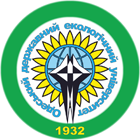Authors: O.Yu. Khetselius
Year: 2015
Issue: 19
Pages: 148-154
Abstract
We present the elements for a new, precise theoretical approach to the description of hyperfine and weak interactions in heavy Fermi systems, which is based on the new combined-formalism of relativistic nuclear and QED perturbation theory with precise taking into account the radiation and correlation effects. There шы e presented the estimates of the nuclear spin dependent contributions into the parity non-conservation amplitude of the transitions, in particular, due to an anapole moment of the nucleus. The obtained results are compared with the data of nuclear shell and other models. The new nuclear QED TV made payment of contributions at PNC amplitude EPNC, independent of the nuclear spin, particularly related to the interaction through the exchange of Z bosons, due to nuclear axial vector (AnVe) shock, the combined effect of the hyperfine interaction and spin –independent Z sd exchange interaction caused by the vector (VnAe) currents of nucleons, and finally, the main source – anapole moment of the nucleus (~ ka). A comparison with alternative data obtained on the basis of MBPT-DF theory (Johnson – Safronova), in the framework of the nuclear shell model Flambaum-Murray and Haxton et al, as well as evaluating DF Bouchiat-Piketty.
Tags: electroweak interaction; nuclear QED perturbation theory; the effect of parity violation
Bibliography
- Weinberg S. Dreams of a Final Theory. N.-Y.: Pantheon Books, 1992. 270 p.
- ’t Hooft G. A confrontation with infinity (Quantum structure of electroweak interaction). Rev.Mod.Phys, 2000, vol. 72, no. 2, pp. 333-340;
- Veltman M.J.G. From weak interactions to gravitation. Rev.Mod.Phys, 2000, vol. 72, noю 2, pp. 341-349.
- Safronova M.S., Pal R., Jiang D., Kozlov M., Johnson W.R., Safronova U.I. New directions in atomic PNC. Nucl.Phys.A., 2009, vol. 827, pp. 411-413.
- Grojean C. New approaches to electroweak symmetry breaking. Physics-Uspekhi, 2007, vol. 50, pp. 3-42. (Review of Particle Properties, Particle Physics Booklet (AIP).-July, 1996.
- Cacciapaglia G. Beyond the Standard Model Working Group: Summary Report. Les Houches “Physics at TeV Colliders 2005”, 2005, pp. 21-64. (Eds: Allanach B.C., Grojean C., Skands P.).
- Yang F. Fundamentals of nuclear models. Singapore: World Scientific, 2010. 740 p. ( Ed.: Hamilton J.H.).
- Blin-Stoyl P. Fundamental interactions and atomic nucleus. N.-Y.-Press, 1976.
- Marciano W. Electromagnetic Probes of Fundamental Physics. Singapore: World Scient, 2003. 560 p.
- Povh B et al. Particles and Nuclei: An Introduction to Physical Concepts. N.-Y.: Springer, 1995. 380 p. (Ed: White S.).
- Grant I. Relativistic Quantum Theory of Atoms and Molecules. -Oxford, 2007. 650 p.
- Dyall K.G., Faegri K.Jr. Introduction to relativistic quantum theory. Oxford, 2007. 590 p.
- Glushkov A.V., Khetselius O.Yu., Lovett L. Electron-β-Nuclear Spectroscopy of Atoms and Molecules and Chemical Environment Effect on the β-Decay parameters. Advances in the Theory of Atomic and Molecular Systems. Berlin: Springer, 2009, vol. 20, pp. 125-152.
- Glushkov A.V., Khetselius O.Yu., Malinovskaya S.V. Optics and spectroscopy of cooperative laser-electron nuclear processes in atomic and molecular systems – New trend in quantum optics. Europ. Phys. Journ, 2008, vol. 160, pp. 195-204.
- Khriplovich I.B. Parity Nonconservation in Atomic Phenomena.- Philadelphia: Gordon and Breach, 1991. 250 p.
- Zeldovich Ya.B. On the anapole moment of a nucleus. JETP, 1957, vol.33, pp.1531-1535. (In Russian).
- Wood C.S., Bennett S.C., Cho D., Masterson B.P., Roberts J.L., Tanner C.E., Wieman C.E. Measurement of the parity non-conserving amplitude in cesium and anapole moment of a nucleus. Science, 1997, vol. 275, pp. 1759-1767.
- Johnson W.R., Safronova M.S., Safronova U.I. Combined effect of coherent Z exchange and hyperfine interaction in parity-nonconserving interaction. Phys.Rev.A, 2003, vol. 67, pp. 062106.
- Khetselius O.Yu., Lopatkin Yu.M., Dubrovskaya Yu.V., Svinarenko A.A. Sensing hyperfine-structure, electroweak interaction and parity non-conservation effect in heavy atoms and nuclei: New nuclear-QED approach. Sensor Electr. and Microsyst. Techn., 2010, no. 2, pp. 17-22.
- Glushkov A.V., Khetselius O.Yu., Gurnitskaya E.P., Loboda A.V., Florko T.A., Sukharev D.E., Lovett L. Gauge-invariant QED perturbation theory approach to calculating nuclear electric quadrupole moments, hyperfine structure constants for heavy atoms and ions. Frontiers in Quantum Systems in Chemistry and Physics. Berlin: Springer, 2008, vol.18, pp .505-522.
- Khetselius O.Yu. Relativistic Perturbation Theory Calculation of the Hyperfine Structure Parameters for Some Heavy-Element Isotopes. Int. Journ. of Quantum Chemistry, 2009, vol. 109, no. 14, pp. 3330-3335.



